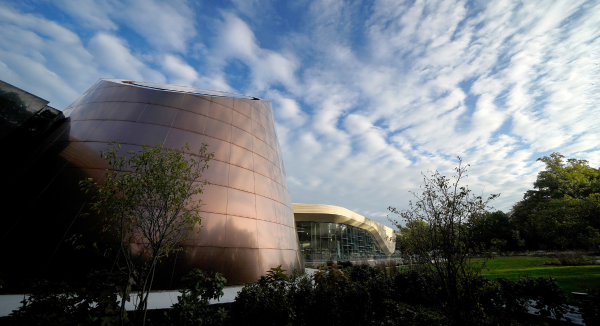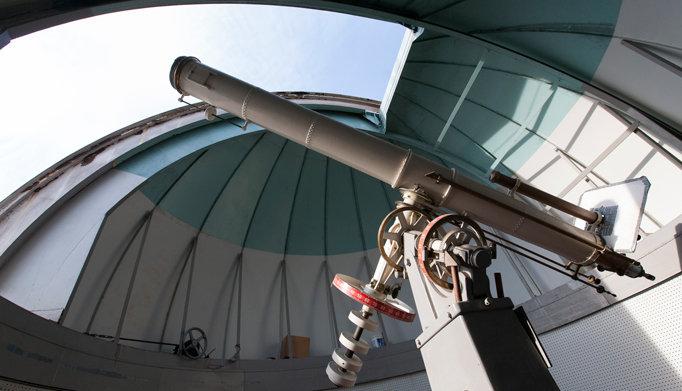
Planetarium Update
Due to construction, programming in the Nathan and Fannye Shafran Planetarium will be unavailable until December 2024.
About the Nathan and Fannye Shafran Planetarium
The design of the Shafran Planetarium building allows its exterior to function as an astronomical instrument. Nighttime visitors can use the building's angled roof to locate Polaris, the North Star, around which all other stars in the sky appear to rotate.
The building's titanium-coated, stainless-steel outer covering sparkles with stars created by embedded fiber-optic lighting. This system emits a subtle glow without contributing to the light pollution above University Circle. Inside, the domed planetarium theater offers comfortable, stadium-style seating for 87 and is wheelchair accessible.
In December 2022, the Shafran Planetarium reopened after a brief closure to install new seating and updated software from Evans & Sutherland. The new Digistar 7 software far exceeds the capabilities of a classic planetarium projector, while its digital projection system continues to allow our astronomers to guide visitors on virtual trips through the Solar System and beyond. The planetarium also employs an LED lighting system, which boasts the lowest power consumption for this type of lighting.

Observatory Update
The Ralph Mueller Observatory is currently closed for construction.
About the Ralph Mueller Observatory
Ralph Mueller Observatory contains a 10½-inch refracting telescope built by the Warner & Swasey Co. of Cleveland in 1899. The renowned J.A. Brashear Company of Pittsburgh, Pennsylvania, a division of American Optical Company, ground the telescope’s optics. Warner & Swasey Co. originally donated the telescope to Western Reserve College (later Western Reserve University and today Case Western Reserve University). It was located on the roof of the university’s physics building for 61 years.
The Museum acquired the telescope in 1960 with funding from the Murch Foundation. Generous financial contributions from Cleveland businessman Ralph Mueller made the telescope’s installation at the Museum possible.
The telescope rests on an internal support pillar on a block of solid concrete. This construction prevents floor vibrations from reaching the telescope. A 19-foot-diameter dome built by Astro-Dome of Canton, Ohio, houses the telescope. The dome is motor-driven and can be rotated 360 degrees. It has a double shutter, which permits greater sky exposure.
The observatory provides an excellent vantage point from which members of the public are able to observe astronomical events. For example, when Mars made its closest approach to Earth in 50,000 years in 2003, more than 750 visitors viewed the red planet through the telescope on a single evening.